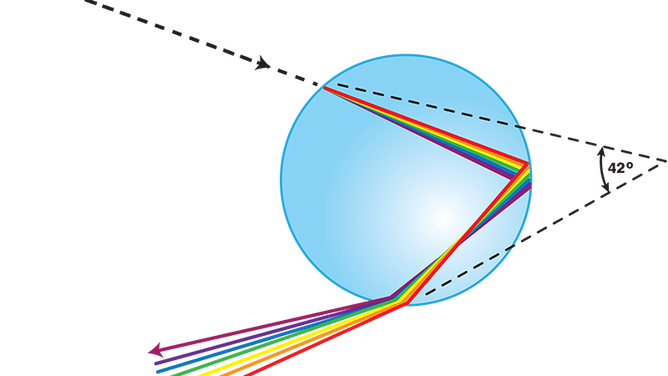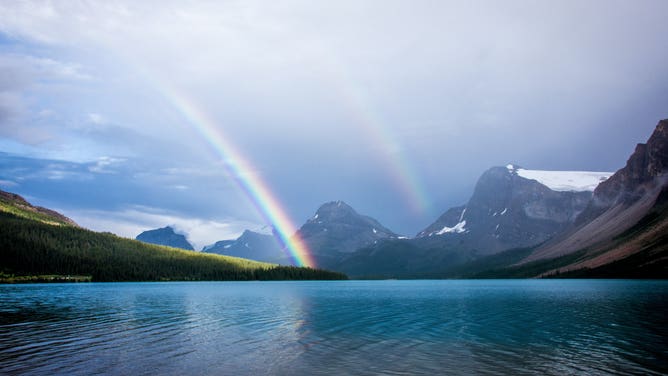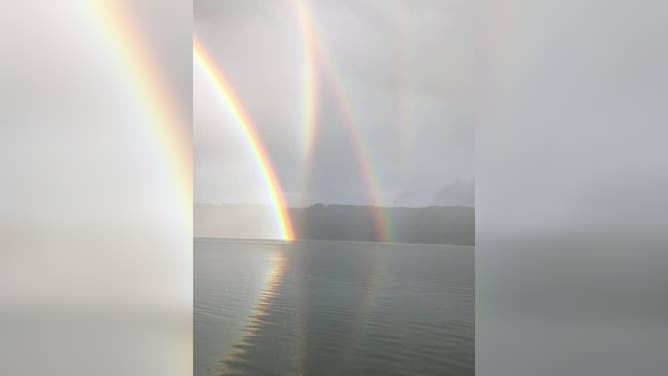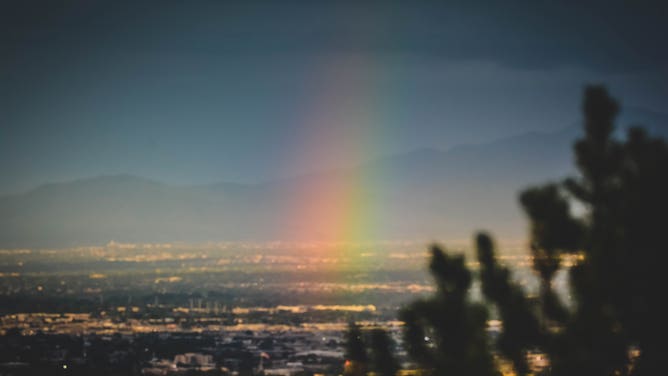How does a rainbow form?
How do rainbows form, and did you know there are times of the year where rainbows can't be seen during lunch?
Rainbows are one of the most common weather phenomena you'll find. Just add sun and rain at the same time, align some angles, and voila! A colorful arc stretches across the sky with promises of oohs, aahs… and maybe a futile search for a pot of gold.
It’s a simple sight of beauty with a complex process behind them.
"Rainbows are formed by a combination of reflection and refraction inside raindrops," says Michael Kavulich, a research scientist with the National Center for Atmospheric Research in Boulder, Colorado.
WHY IS THERE A HALO AROUND THE SUN?
First, you need the sun to be behind you and the rain out front. Next, you need those raindrops to be spherical. Luckily, most raindrops fit the bill.
"When light enters the raindrop, it bends due to this refraction phenomenon (which) affects different wavelengths of light slightly differently," Kavulich said. "So a red light is going to bend slightly less than blue light."
That's the key to getting the colorful arc.
"If anybody's ever played with a prism -- you can see that when white light comes in one side, you get this nice rainbow pattern out the other side. That's essentially what happens inside millions of raindrops inside a rainstorm as the sunlight is shining on that," Kavulich said. "Sunlight will reflect off the backside of the raindrop. And as (the light) comes back towards you, since it's undergone this refraction now, instead of seeing white light as it came from the sun, you now see slightly different colors from slightly different angles. You'll see the red all the way through the blue -- and even violet."
Water refracts visible sunlight at around a 42-degree angle, and thus all rainbows are full circles at an angular radius of 42 degrees.

(NOAA)
"So if you had some kind of crazy planet with a different substance raining out, you'd have a different-sized rainbow," Kavulich said.
When standing on the ground, you only see the top part of this circle because the rest of it is blocked by the ground and why it appears as a rain "bow" and not a rain "circle." However, if you were to gain some altitude and be able to look down -- say, standing atop a skyscraper or on a plane or overlooking a cliff, you can sometimes see most, if not all, of the full circle of a rainbow.

Photo by Jakob Owens on Unsplash
On the other hand, sometimes the sun is too high in the sky to see a rainbow. Here's a fact to stump your friends at your next dinner party: You won't see a rainbow at lunch in the summer. Why? Once the sun climbs higher than 42 degrees above the horizon, any rainbows would be projected flat on the ground. Whether you're up in Anchorage or down in Key West, the sun is higher than 42 degrees in the summertime, around midday. (In Key West, Florida, in the summer, rainbows aren't visible between about 10 a.m. and 5 p.m.!)
(LINK: Calculate the sun’s position at any given time and place. Is the azimuth less than 42 degrees? Then rainbows are possible!)
What makes a double rainbow?
Actually, all rainbows will make a double rainbow.

Photo by David Brooke Martin on Unsplash
The second rainbows occur from light refracting twice inside the raindrop, projecting a second bow of colors always reversed from the primary bow. It can be very exciting.
But why can't you always see a double rainbow?
"Sometimes the secondary is too faint to see or notice, either due to dim sunlight or not enough raindrops," Kavulich says
How about a double-double rainbow?
And if you're near a large body of water, sometimes you can get a "reflection rainbow," which presents a bow at a different angle from the primary bow.

Reflection Rainbow spotted in Western Washington.
(Doyle Beekley)
Here, you simply are working with "two suns" -- the sunlight reflecting off the water provides a fresh, alternate angle to create its rainbow. In the photo above, you have an even more rare double reflection rainbow!
